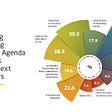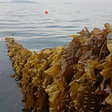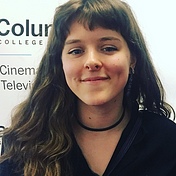Zero Waste: Confronting Ignorance
Despite our dire state of affairs with climate change worsening and our government denying that any of this is worth worrying about, there is an equal and opposite force trying to fight against this ignorance.
For better and for worse, some sustainability terms like “Zero Waste” have become trendy. There are tons of bloggers, podcasters and Youtubers creating content about these topics. To sift through all of the clutter I wanted look into the definition of zero waste via the Zero Waste International Alliance:
“The conservation of all resources by means of responsible production, consumption, reuse, and recovery of products, packaging, and materials without burning and with no discharges to land, water, or air that threaten the environment or human health.”
Even though the term “Zero Waste” might seem extreme, you have to rethink what your concept of waste is. For example, in nature there is no waste. Anything that is discarded or dead is either repurposed or decomposed. But as humans, we have decided to step out of this natural circular economy, forgetting that we all live downstream of one another.
The Beginning
My journey into the world of Zero Waste began with the Plastic Free July campaign. For an entire month I tried my best to avoid purchasing plastic, but it was incredibly difficult. What it did accomplish was give me the perspective that we are surrounded by plastic! It feels unavoidable. Even when I went to the beach, I saw the amount of plastic that was choking the tide pools.
This “experiment” gave me a new perspective on my life and my consumption patterns. And so this first step of mine was observing what was invisible to me. It also made me realize that I can’t totally eliminate plastic from my life. But rather than feel totally discouraged, I took stock of what bad habits I’d gotten into that could be easy to fix. The two main questions you can ask yourself are:
- What do you buy/consume/bring into your home?
- What do you throw away/discard/waste?
Every person is different and has access to different resources. Some folks have large plots of land and some live in studio apartments. Some are surrounded by eco friendly stores and some live far away from any bulk store. Some people are shop-aholics and some are hoarders. So before you freak out or shrug off the possibility of making changes, see what tiny steps you can take. Even if it’s taking a look at all of the confusing recycling rules!
COMPOST
The next step I took in reducing or repurposing my waste was to compost.
It turns out that some cities accept curbside compost (like San Francisco) but most don’t, including Los Angeles. However, I was able to find some non-profit organizations that make it easier to compost, by providing pick up locations at farmers markets and community centers. Living in a studio apartment makes composting feel impossible but a trick I found out was that I could freeze my food scraps before I was ready to drop it off. Freezing can help by eliminating smells and doesn’t require extra storage for those who are tight on space.
Composting also helped encourage me to avoid buying pre-packaged produce and switch to more whole foods. Also, a lot of folks think that since food waste is biodegradable it isn’t bad for the environment but it actually creates an enormous amount of methane because landfills are anaerobic (lack of oxygen) to allow for a speedy breakdown to occur. And so by composting your food scraps instead of throwing them away you are reducing your methane emissions (which are trapping more heat in the atmosphere than Co2!).
FARMERS MARKET
I‘ve also started going back to Farmer’s Markets where it’s easy to buy package free food.
This also led me to rethink some of my eating habits and I begancooking more at home and trying out new recipes avoiding most meat and dairy products. I wasn’t vegan, but I was trying to uphold a more plant based diet which felt easier to do, since it was hard to compost meat & dairy products. But I could still compost egg shells.
SINGLE USE PLASTIC ITEMS
The next step I took was try and avoid single use plastic items such as: plastic bags, plastic to-go cups and cutlery.
These were replaced by my stainless steel water bottles, canvas tote bags, along a metal fork I wrap in a cloth napkin. I tried my best to incorporate these items in my everyday routine and even though I wasn’t always perfect, it still made a big difference. I was bringing less junk into my apartment, my car and my trashcan. I also had a deeper connection with what I was purchasing and consuming. I could only fit what ever fit into the bags I brought and I had to be responsible for cleaning out my water bottle, tupper ware and cutlery every day since I could no longer mindlessly throw them away.
STAYING CLEAN
I then began to rethink my cleaning habits. I started by cutting up towels I didn’t need and making them into rags. I also switched to more natural & safe cleaners (Dr. Bronners, Vinegar spray etc). I even started rethinking some of my bath & body care products by choosing to go to a refill store to stock up on shampoo, conditioner and soap in glass bottles, rather than buy a new plastic bottle every time I ran out.
Refill stores are becoming more and more popular but they aren’t a new concept. General stores back in the day provided similar services and so did the milk man, by returning your glass jars whenever they were empty to get refilled. But we have expected stores and companies to create packaging for every new product we buy even when its entirely avoidable.
DIY PROJECTS
More recently I tried my hand at making my own DIY products! I started off with a relatively easy recipe by making my own lip balm. It’s been so dry in L.A. during the winter and rather than resort to buying another plastic tube I had a lot of fun combining a mixture of moisturizing ingredients and created enough to last me the whole winter (if not longer!). By going to refill stations where I can buy small amounts of ingredients such as beeswax or coconut oil I can experiment without committing to buying a whole bag (that I’d waste).
DIY projects are also great when it comes to gifting. From giving second hand items, or crafting something that will stand out from anything you could buy at a store.
For the holiday season, I tried to avoid buying gift wrapping, which is used once and quickly thrown away. Also, the shiny glittery holiday paper often uses other materials aside from paper, which makes it impossible to recycle. And so I grabbed some extra brown packing paper I’d held onto, and tied it up with yarn and a sprig of dried rosemary.
CONCLUSION
In less than a year, I went from being completely out of touch, disconnected and discouraged about what I could do to make a difference. I still had a long way to go- I was still driving everywhere, I still occasionally ate meat & dairy, I slipped back into bad habits every now and then. But what I also had to manage was the amount of eco-anxiety a lot of folks gain, once they learn about all of the horrible environmental impact we make on a daily basis. So I tried to focus on the habits I had changed and slowly implement new habits I would work on:
- Take the train to work. Maybe not everyday, but even once a week.
- Eliminate beef (and most dairy & meat) from my diet.
- Cook more! Try out new recipes and maybe try baking bread!
- Volunteer for sustainability oriented organizations.
Less than a year ago I was, what I like to call, “dormant” not because I didn’t want to make a difference but because I felt lost, confused and overwhelmed. The majority of podcasters, to bloggers, to folks I’ve actually met and volunteered with, were non-judgmental folks who gave me a lot of helpful tips & tricks. And so another other goal of mine is to be encouraging of others without being strident or discouraging.
I also want to mention that many of these Zero Waste projects are incredibly satisfying and fun! By implementing many of them into my everyday life, I’ve noticed a positive increase in my mental health-whether its the crafty side of Zero Waste or some of the mounting guilt that has been reduced.
Oftentimes many of us feel powerless to do anything. For the tides to shift, there needs to be a dramatic change that comes from large corporations and governments. But what is helpful to remember is that these large organizations are made up of people who are supposedly representing our needs, desires and rights. And so if we can increase the demand for sustainable practices while implementing new habits of our own, these mountains of trash won’t seem so high to climb.





